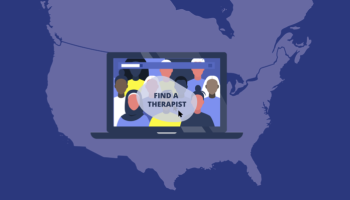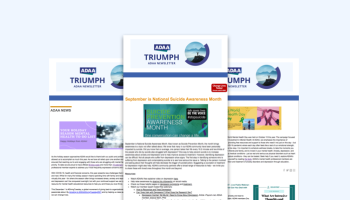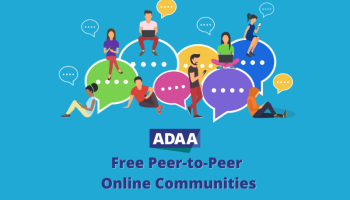Justice-Based ERP: A New Take on an Old (Tried and True) Approach
Justice-Based ERP: A New Take on an Old (Tried and True) Approach

Why "Just Face Your Fears" Doesn’t Always Cut It
We’ve all heard the phrase: “Face your fears head-on.” As clinicians, we know that this mindset underpins a powerful intervention—ERP—for individuals living with OCD. ERP involves helping clients confront feared stimuli without resorting to compulsions, breaking the anxiety-avoidance cycle that reinforces OCD symptoms.
But effective ERP is more than fear-based exposure for its own sake. In our clinical work, we often help clients identify fears that truly interfere with values-driven functioning—not just those that spike anxiety. For example, a person who avoids public restrooms due to contamination fears may benefit greatly from targeted ERP, while someone who dislikes bungee jumping but experiences no daily impairment may simply be exercising personal preference.
Over time, ERP can slip into what some call the “Fear Factor” approach—developing exposures primarily for their anxiety-inducing properties without thoughtful consideration of relevance or ethics. When this happens in cases involving sexual orientation- or gender-themed OCD, the consequences can be harmful.
When ERP Targets Identity: A Risk of Harm
Clients with OCD may experience intrusive doubts and obsessions centered around their sexual orientation or gender identity, including thoughts such as:
Sexual Orientation OCD:
- “What if I just think I’m straight but I’m actually gay?”
- “What if I never figure out my orientation for sure?”
Gender Identity OCD:
- “What if I’m not ‘trans enough’ to use that label?”
- “What if I’m wrong about my gender and make the wrong decision?”
These fears are not about prejudice or overt stigma—in many cases, the client holds affirming beliefs about the LGBTQIA+ community. Instead, the distress arises from uncertainty, fear of being inauthentic, or anxiety about unknowingly causing harm—core fears we recognize as foundational in OCD presentations. Distress may also arise in response to fears regarding the potential consequences of holding certain identities (e.g., being judged or mistreated by others).
Using anxiety-maximizing ERP exposures in these contexts can inadvertently reinforce misinformation or contribute to stigma. As Pinciotti et al. (2022) explain, this not only risks perpetuating mistreatment of LGBTQIA+ people but may tokenize LGBTQIA+ individuals or alienate marginalized clinicians. A more intentional and ethical approach is needed.
Justice-Based ERP
Justice-based treatment is defined as an “equitable, thorough, and compassionate lens” for conceptualizing and delivering care to all stakeholders—including clients, providers, and the broader community (Pinciotti et al., 2022).
When applied to ERP, a justice-based model emphasizes relevance over reactivity and values over volatility. Rather than just evoking anxiety for anxiety’s sake, exposures should foster healing, insight, and self-agency.
Three Types of Justice-Based Exposures
Below are three categories of exposure strategies that align with a justice-based ERP framework for OCD related to gender identity and sexual orientation:
- Uncertainty and Core Fear Exposures
Focus on the underlying fear, not just surface obsessions. For example, if a client fears being deceitful or inauthentic, an exposure might involve lying in a safe, low-stakes scenario (e.g., sharing a false memory with their therapist). This targets the fear of dishonesty without reinforcing stereotypes.
- Neutral and Positive Identity-Based Exposures
Engage clients with LGBTQIA+-related content in a way that neither pathologizes nor sensationalizes. Examples include:
- Writing and sharing a “coming out” letter
- Attending an LGBTQIA+ event with a neutral support person
- Viewing diverse gender identities represented in media made by gender diverse creators
These exposures reduce avoidance while offering opportunities to engage with the LGBTQIA+ community and related content
- Psychoeducation as Exposure
For OCD themes rooted in misunderstanding, psychoeducation can serve as both an intervention and an exposure. A client might read about different dimensions of attraction (e.g., romantic vs. sexual) or watch content that normalizes identity fluidity. This corrects OCD-driven black-and-white thinking while still offering an opportunity for exposure.
Questions to Guide Exposure Planning
As you integrate these justice-based exposure strategies into your practice, ask yourself:
- Does this exposure reinforce or challenge stereotypes about LGBTQIA+ people?
- Are we risking tokenizing someone without their consent?
- Is there a less harmful yet equally effective way to structure this exposure?
- Would I feel comfortable conducting this exposure with an LGBTQIA+ client or colleague present?
ERP remains a powerful, evidence-based intervention—but we must adapt our methods to reflect what we now know about systemic harm, lived experiences, and therapeutic ethics.
Bringing Justice into Evidence-Based OCD Treatment
As clinicians committed to inclusive, ethical, and effective mental health care, we are called to evolve. Justice-based ERP offers a way to maintain fidelity to best practices while expanding our lens to include identity, values, and community impact. By integrating curiosity, humility, and critical reflection into our treatment planning, we make space for every client to feel seen, respected, and safe.
Further Reading:














